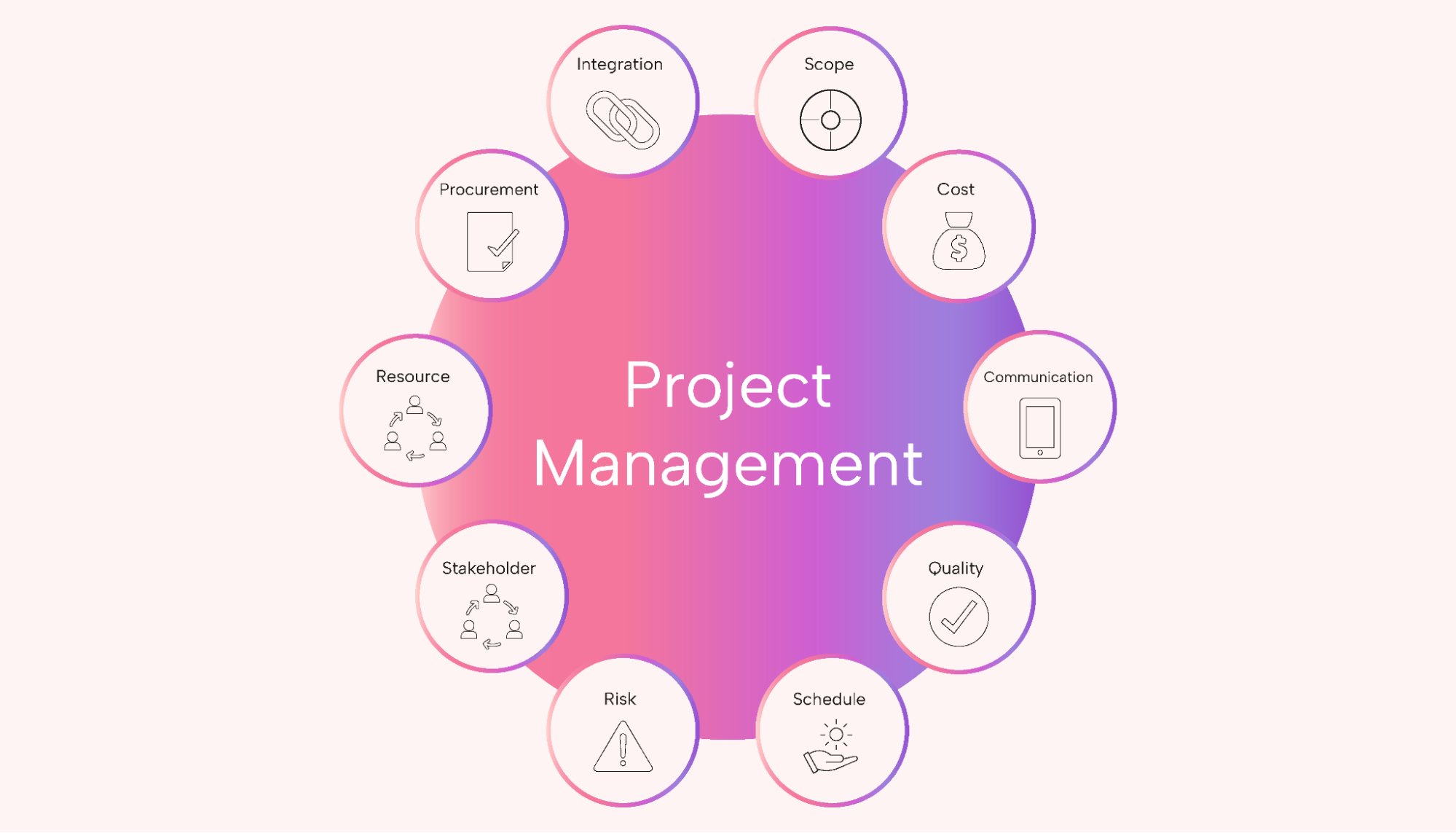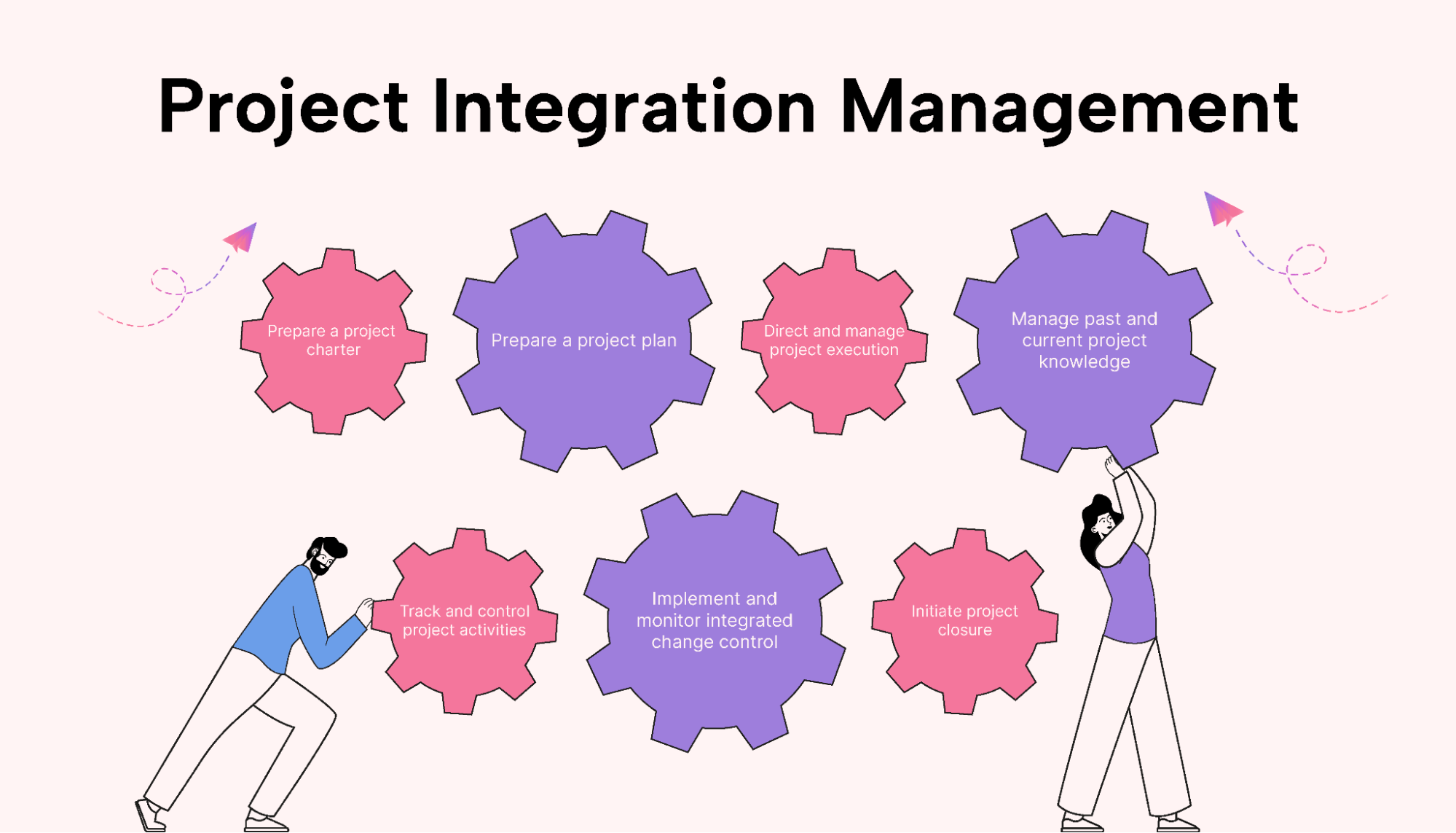All businesses hope to complete projects and achieve their project goals. Otherwise, they wouldn’t invest resources into the projects.
Businesses met their goals in only 73% of projects in 2021. This statistic is worrying, considering most projects are capital-intensive.
Projects fail for many reasons. Among them are budget deficits, unrealistic deadlines, and scope creep. Some businesses even fail because they use a single method for all projects.
Businesses can reduce project failure with effective project integration management. This allows teams to coordinate their project-related efforts. It acknowledges that no two projects have the same needs and challenges. Project integration management enables you to align your resources and processes. You can then manage your organization’s projects to deliver the maximum business benefit with the least confusion, delay and angst.
In this article, we’ll cover:
- Project integration management and its benefits,
- How project integration management and project management compare,
- Essential steps of project integration management, and
- How to perform effective project integration management.
What is project integration management?
The Project Management Institute (PMI) says that project integration management includes the activities to integrate project processes and make choices about allocating resources, choosing among competing demands, tailoring processes to project objectives, and managing dependencies among the project management knowledge areas (PMBOK, Sixth Edition).
To set the stage for project integration management, let’s dig into the components of effective project management as described in the PMI Project Management Body of Knowledge (PMBOK): the five process groups and the ten knowledge areas.
The five process groups
Project integration management involves managing project activities using a holistic approach, from project charter to project closure. This means making sure that all the project processes across the five process groups (initiating, planning, execution, monitoring and controlling, and closing) are managed in a coordinated manner.
These five process groups have the same names as the phases in which they happen, and they define the project management life cycle. In each phase, specific processes are used. The processes used in a particular phase are known as a “process group”.
For example in the planning phase, one of the processes is to develop the project management plan. That plan is used to manage just about everything that happens in the execution phase. The project management plan includes sections on how to manage each of the ten knowledge areas for the project.
The ten knowledge areas
PMI has also defined ten knowledge areas, each focusing on a specific aspect of the project, but which are also interrelated.
 |
The ten knowledge areas are:
- Scope – what is the project supposed to produce or deliver?
- Cost – what is the budget for the project?
- Communication – what information needs to be shared with whom?
- Quality – how will the project manage quality of deliverables and processes?
- Schedule – how will the project timelines and schedule be developed and managed?
- Risk – how will project risks be identified and managed?
- Stakeholders – how will the stakeholders be identified and managed?
- Resource – what resources will be needed and how will they be acquired and managed?
- Procurement – what contracts are required and how will those be managed?
- Integration – since these areas are related, how will they be monitored, and how will changes to one or more of them be integrated with the other areas affected?
Aha! So it turns out that project integration management recognizes that a change to the direction of the project in one area will likely impact one or more of the other areas.
For example, let’s suppose that your client requests an additional feature, or even wants two different versions of the software you’re delivering, standard and deluxe. Wanting to please, you can say okay, sure, and encounter the dreaded scope creep.
Or, you can assess how this change in scope will affect the schedule, the cost, and your resources. That way, you and the client can understand the impact on both of you and make a rational decision to proceed or not.
We might add one more knowledge area to those that PMI originally defined, and that’s benefit realization management. That means making sure that every project is focused on, and does, deliver the business benefit for which it was selected. If we include that, then project integration management could be just as applicable to multiple projects, or the entire set of projects that a company undertakes.
So project integration management requires the skill to recognize the interrelationships among the special knowledge areas, and make intentional, comprehensive decisions that fully recognize the benefit and impact on the project.
How is project integration management different from project management?
People often assume project management and project integration management mean the same thing. The terms have close meaning and application but share some differences. To distinguish between them, we must first understand both terms.
Project management differs from project integration management in several ways. First, project management involves using processes and methods to achieve project goals. It includes activities like creating a project management plan. The plan includes sections for all the relevant knowledge areas described earlier, such as scope, schedule, cost and risk.
In fact, these disciplines are interdependent. So an issue that arises affecting the schedule may also impact cost and risk. Project integration management ensures that teams consider and address related and sometimes conflicting issues. It provides guidance on how to synchronize these interrelated processes.
When looking at all the knowledge areas, it’s possible for some of them to be managed by a specialist in that area, rather than the project manager. For example, the budget could be managed by a finance specialist. The contracts could be managed by a procurement specialist.
The project manager, on the other hand, has to understand all of the knowledge areas, and be able to recognize how they relate to one another in order to make the key decisions required for the project to deliver the business benefits for which it was selected. So the project manager has to own project integration management.
Project management is often specific to a project. The applied methods are usually tailored to fit individual projects. In contrast, project integration management happens both within a project and across an organization.
Why is project integration management important?
Businesses stand to gain from effective project integration management. It fosters collaboration among cross-functional teams to achieve project goals. It also ensures timely decision-making, ensuring projects remain on schedule. Let’s discuss the benefits in detail below.
Improved coordination of efforts throughout a project lifecycle
In many organizations, each knowledge area of project integration management is handled by different personnel (specialists). These specialists must work together to determine how a change in one area affects other areas. For example, changing the project’s scope will likely affect its cost and schedule. The specialists work together to assess the expected changes and recommend suitable mitigation strategies to the project team.
Clear understanding of project roles and responsibilities
Project team roles evolve throughout the project lifecycle. The same happens to the assigned tasks. The change may be in the type or quantity of work. Suppose that the product owners request a new feature. This likely increases the scope of work for most team members. The product designer may have to provide new sketches for the feature. The procurement specialist needs to determine which new or additional resources the team requires.
Effective and efficient decision-making
Project integration management emphasizes timely decision-making. This makes the project management process as smooth as possible. It also avoids inefficiencies arising from delayed decisions.
Suppose the team must modify the project scope to meet new client requirements. The team (working together with the knowledge area specialists) should determine changes in the project’s needs. Any issues needing senior management approval should be escalated to the relevant decision-makers. This ensures the project team and knowledge area specialists receive the green light to proceed with the changes.
Six steps for effective project integration management
Many businesses prepare detailed project plans and schedules. The projects still fail because they didn’t integrate them. Issues like failing to update the procurement specialist may mean resources or supplies are not availed on time. This will likely affect the schedule and budget.
 |
Mind the whole picture when preparing the project charter
Effective project integration management requires creating a holistic project charter. This includes creating project goals that align with organizational objectives.
Suppose you are undertaking a project on behalf of a client. The goals and objectives should align with their desired outcomes. But, undertaking the project should meet the goals and objectives of your company, too.
Businesses must also check how different project knowledge areas interact with each other. For example, any changes to the project scope often affect the schedule and cost. It may also affect the quality and quantity of the required resources. Otherwise, addressing only the affected area without minding the whole picture can create chaos.
Plan in the context of the organization
The project plan should account for other ongoing projects. This is important where cross-functional teams overlap across projects. For example, suppose two projects include digital design-related tasks. The project manager(s) can’t schedule the same resources on the same day. The company may schedule them on different dates or outsource the skills.
You must also ensure that other project aspects align with the organization. Below are some elements of the project plan that may change:
- Scope management plan
- Cost management plan
- Change management plan
- Resource management plan
- Stakeholder management plan
- Risk management plan
Synchronize processes within the project
Project integration should consider all processes and activities within a project. Intra-project integration should focus on improving collaboration and communications among cross-functional teams. For example, any changes made concerning one knowledge area should be communicated to all specialists and relevant stakeholders.
Project integration should also manage competition for resources. For example, you should schedule competing activities on different days. The procurement specialist plays an essential role in availing the resources on time.
Finally, you should account for other relevant activities that are beyond the project. For example, set schedules to account for vacations and public holidays. For example, the procurement team may inform the project team that some resources may not be available on the expected dates because a supplier does not process or deliver orders during national holidays. Failure to update the project team about the expected delay means the project manager will not adjust the schedule accordingly.
Make holistic decisions
You should leverage your project knowledge to make processes more efficient. You might have experience from previous projects your company has performed. Businesses should also work closely with project area specialists. For example, a finance specialist has better knowledge of project budgeting and costing than a small business owner doubling as a project manager.
Mind the change management
An important part of project integration management is effective change management. You can use a change management process to assess how a change affects other processes. Change management should account for all knowledge areas. It starts by determining how a change in one knowledge area affects others. This ensures that change management is holistic.
It also ensures that the change doesn’t introduce unwelcome surprises because its impact has been thoroughly assessed and accepted by those involved.
One goal of project integration management in change management is ensuring that all affected knowledge areas are monitored. For example, the project team should monitor how the risk management plan is affected by changes in the project scope.
You should also document all requested and implemented changes. This allows you to track and manage the changes. It also provides a reliable source of reference for the future.
Put in place a feedback loop
Project integration management relies on regular reviews for continuous process improvement. It allows businesses to improve their strengths and address their weaknesses. The feedback should assess the level of integration. For example, you may collect feedback from the specialists on whether communication and information sharing was effective. The specialists may also recommend strategies to improve integration when implementing future projects.
Improve your project outcomes through effective project integration management
Businesses stand to gain from effective project integration management. It helps harmonize processes, methods, and systems. This results in improved project success.
Project managers can use Motion for project integration and schedule management. Motion gives you real-time visibility into resource allocation and individual team schedules. It can do this throughout the project lifecycle. When schedules change, Motion can automatically adjust and communicate the new schedules.
Project integration management means understanding the relationships among all the project processes. What if a supplier in procurement management is going to be late? It will impact at least schedule management. It may also affect cost and resource management. So project integration management means knowing what to address besides the symptom.
Motion can adjust schedules to prevent conflicts. It will tell you when you’ve asked it to do the impossible. That will let you know to assess the impact on any related processes. So, it will not only manage your schedules. It will alert you to assess everything when it lets you know a deadline may be in jeopardy.
Let Motion help beyond scheduling. It can help with project integration management, too. Check out Motion’s free trial today.





